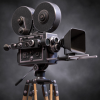Leaderboard
Popular Content
Showing content with the highest reputation on 05/20/2014 in all areas
-
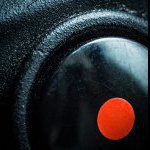
Bell & Howell 16mm Anamorphic Lens
Bold and 2 others reacted to QuickHitRecord for a topic
PREFACE: I have been doing some testing with this lens for a while now, but lately I have been swamped with work. Also, there has been some sadness surrounding the girl who appears in the demo video (and several other anamorphic tests of mine), so anamorphic shooting has been on the back burner for a while now. But I'm seeing now that someone else has had the same idea, and is trying to make an unrealistic profit from it. And so I feel that I must post this write up, because this isn't a $1400 lens. The search for the perfect anamorphic lens is over (at least for me). Some months ago, I saw a post here from a member named frerichs. He claimed to have purchased a Bell & Howell 2x 16mm Anamorphic Projection lens (not the excellent Kowa model) for cheap and discovered that it was single focus, like the coveted Iscorama. I was skeptical, but since they can often be had for between $75 and $150 on eBay, I bought one to try out for myself. At first glance this lens does not look like a winner. It has neither the steam punk appeal of the Lomo square fronts, nor the timeless curves of the Iscorama. The impossibly long and narrow build of the lens suggests that this would never be viable match for anything but the longest taking lenses. And yet it works. The front element is a -7 diopter that focuses the other two elements in the housing as the head is turned, similar to the Iscorama. Unlike the Iscorama, the lens takes about five full rotations to go from infinity to close focus, which is limiting for practical use. But I have been working with a CNC machinist to resolve this, and I now have a prototype that allows me to do a full range rack focus in a one and a half turns: (Want to do this yourself? Ask a machinist to design a new front housing with a "multi-start thread" that will house the front diopter and screw directly onto the existing thread on the tube; this could also conceivably be done for Iscoramas to the same effect). We have also added a standard 58mm threading for easier filter mounting, and I've since installed a custom seamless ultra-wide delrin focus gear to add just a little torque for even easier focusing (not pictured). The Bell & Howell projection lenses that originally shipped with this lens were f/1.2 and f/1.4, so it is designed to be sharp at faster apertures -- and I find that it is. Perhaps not razor sharp, but as sharp as I'd ever want an anamorphic lens to be. And once you've removed the two limiting screws from the "head" of the lens, you can focus as close as two feet without diopters. Too much closer than that and the head will screw right off, but it's just as easy to screw right back on. Flaring is nice: The lens is not without its drawbacks. For one, it focuses to about 40 feet, not true infinity. That's not an issue for me, but it might be for some shooters. It's all-metal construction makes it a bit heavy which combined with its length will benefit from a lens support (which eliminates the shake that appears in my rack focus test). It vignettes when paired with wider lenses, so it is a better fit for smaller sensor cameras or Canon DSLRs with Magic Lantern raw crop mode enabled. For instance, I can shoot 1600x1200 with a Pentax Takumar 105mm f2.8 lens on my 5D Mark III and I don't see any vignetting before f/8. I also tested it with a Nikkor 50mm f1.8 AI-S on my GH2, and it was vignette-free so long as I cropped my 2x image down to 1.5x. So how does the footage look? Here's something that I shot with it: I am excited to add a sharp, easily rack-focusable, short minimum-focusing anamorphic to my arsenal. It won't be the right lens for every anamorphic user, especially those who want to be able to shoot as wide as possible, but for the price, it could make single-focus anamorphics more accessible to those who have not had a chance to work with them yet. Happy shooting!3 points -

Must watch video on full frame vs crop cameras. "Full frame look" covered.
richg101 and one other reacted to themartist for a topic
Way too much aggression in this thread.2 points -

Must watch video on full frame vs crop cameras. "Full frame look" covered.
fuzzynormal and one other reacted to sunyata for a topic
What the hell is going on here? I've totally lost track. Bring back film!2 points -

Lenses
ozey40 reacted to Andrew - EOSHD for a topic
The official EOSHD discussion thread for all things lens related!1 point -
Everything about this video is totally unnecessary. The internet as a whole is stupider because of it, IMO.1 point
-
I like the Zoom H1. Tiny little thing and you can use it as a on camera mic and record into it at the same time. If you don't hit record while plugged in as a mic it will still record into the camera but as Maxotics said, don't forget to hit record to have the choice.. I am sure there are better but for the price and size it is great.1 point
-
Hi Andrew, I'm a long time lurker on your site... So it's time to post something here ;) Here's our latest music video, shot on BMCC 2.5K with S16 Zeiss super speed and a 5.7mm Kinoptik. I hope you'll enjoy it ! Nicolas1 point
-
Oh, one more thing (since I'm getting it all out of my system). To those who agree with his assertion that camera manufacturers are somehow "ripping you off" because the F/2.8 works more like a 5.6: Understand that wider apertures are more expensive to engineer and produce than smaller ones. The glass is larger and heavier and requires more quality control in the optics. Canon doesn't charge more based on the DOF you get by using it, they charge more because it is technically more complicated to produce a constant aperture zoom with that amount of sharpness and aperture. Whether you are getting the same DOF as a full frame camera or not, the glass being produced by crop sensor manufacturers like Panasonic has an aperture of F/2.8. The aperture is a measurement of how light passes through that lens, and the lens in this situation IS, in fact, an f/2.8. So why should they not be allowed to charge what an F/2.8 costs? Because YOU don't find it as useful as it is on a full frame? How is that a fault of the lens? It still transmits the same intensity of light, has the same DOF (if you are strictly calculating aperture to distance-to-subject, as it should be), still costs them the same amount of R&D to make because it IS actually a 2.8 aperture. So why are they ripping you off by charging the requisite amount for it? Don't get me wrong, I wish it were cheaper, but it seems appropriately priced for what it is.1 point
-

Must watch video on full frame vs crop cameras. "Full frame look" covered.
Andrew - EOSHD reacted to jasondhsd for a topic
Everyone knows how to calculate dof and angle of view when comparing crop to full frame sensors and sometimes the marketing people will do that for you. The problem with the whole noise and iso calculation is it's trying to mush together different measurements. ISO at 200 is going to give you the same exposure across all different cameras, same with 400, 800, 6400, etc. So not worrying about dof or angle of view, 50mm f2.8 800 ISO will be the same exposure for all cameras. As far as noise is concerned there's no way of comparing that because it changes constantly and varies camera to camera. Right now the real world differences in noise from 200-800 is pretty negligible. And what basis do you calculate the noise from....a full frame sensor? Well a MD MkII at 20mp is a lot noisier then any of the current mft sensors at the same ISO, and the Nikon D4 looks like it has about 2x less noise when compared to the MD MkIII even at lower ISO. So what do you use as the base to determine these calculations? The video appears to be using the MD MkIII but what about 3 years from now? If this guy it trying to get manufactures to more accurately advertise their lenses and sensors as compared to a full-frame the advertisers will be constantly having to update their materials as new sensor technology hits the market. If I'm looking to buy a new lens four years from now and the numbers are based off the noise from a MD MKIII I'm not going to get an accurate assessment because by then technology would have advanced to where the MD MKIII at say 800 is equaled to my GH6 at say 1600 or 3200. Like I said, the manufactures job is to report the physical properties of their camera and lenses. It's up the buyer to determine whether or not they want to compare it to full frame equivalent and whether or not they find the noise acceptable or not in terms of ISO performance. If someone doesn't know the differences before plunking down $1000+ then they're an idiot.1 point -
http://www.amazon.com/TASCAM-DR-05-Portable-Digital-Recorder/dp/B004OU2IQG/ref=sr_1_4?s=electronics&ie=UTF8&qid=1400598106&sr=1-4&keywords=audio+recorder+tascam When I researched this I think the Tascam was the only one that has a phantom power supply to external mic if needed, not that I use it. It has a tripod socket. Haven't used mine much, but this is what I bought after all my research. The most important thing to remember in using any of these recorders is to make sure it is recording when you hit the record. At first press it only shows levels! I've lost audio because of this (wasn't recording when I thought it was).1 point
-

Must watch video on full frame vs crop cameras. "Full frame look" covered.
andy lee reacted to Andrew - EOSHD for a topic
Multiplying aperture by crop factor does not change the brightness of the image or the bokeh at all! What changes with the crop factor is the framing of the shot and the need to move the camera back from the subject to get the same field of view as a larger sensor and THAT is what changes the depth of field, bokeh, nothing to do with the aperture at all. His maths is bollocks. Multiplying ISO by crop factor... same bollocks! If a larger sensor is less noisy and more sensitive than a smaller one (and this is not always the case, like I keep telling people only for them to ignore my argument... BMPCC anyone!?? Old 5D Mk1 vs D5200!?) it has to do with the pixel size and architectural design, plus many other factors of the electronics, not the sensor size. So the maths of multiplying sensitivity by crop factor is just total fantasy. And Karim your top diagram of the full frame sensor capturing more rays... are you talking about intensity here? Because the intensity with 4 rays on the large sensor and 2 rays on the small sensor is the same. It isn't right to imply that the Speed Booster with 4 rays delivers the same light intensity as the full frame sensor is able to capture with 4 rays over a larger area. The full frame exposure with 4 rays is darker than the Speed Booster exposure with the 4 rays concentrated on the smaller area. The image with the Speed Booster is more intense and this is a BENEFIT of a small sensor. I suggest the thread dies a death because it is confusion central, total bollocks, and really just not necessary. Use crop factor to figure out your angle of view and disregard it for everything else. It just doesn't fly, either technically or as a conceptual prop and way of figuring stuff out. The least confusing way to continue is to take each spec of the camera in isolation regardless of sensor size. We don't let something unrelated to sensor size like aperture dictate the whole camera spec do we? So why do we let sensor size dictate completely unrelated specs like ISO and aperture!? Madness! I really question the intention behind the video in the first place... It just looks like a Canon & Nikon FUD piece.1 point -
70mm, but horizontally :p1 point
-

Must watch video on full frame vs crop cameras. "Full frame look" covered.
andy lee reacted to fuzzynormal for a topic
35mm or 16mm?1 point -
There is a lot of apparent disagreement here but not much actual disagreement, I think. Is this a fair summary? If I am buying a camera BODY, there are some numbers that I should know: - sensor size - pixel count Now all other things being equal more pixels is nice (up to a point), but as Andrew points out at the beginning of every camera report, more pixels on a smaller sensor probably means worse pixels all other things being equal. But bottom line is that, especially for video, we have more pixels than we need. Really, it is PIXEL SIZE, which is derived from the above two numbers (roughly - Andrew's point about global shutter circuitry and other technologies like backside illumination must be taken into account) that matters more. However, all other things are almost never equal. So if we want to know how good the actual image is, everything is in the details. If I want to know the details, then I rely on review sites that take pictures under carefully controlled situations with the best possible lenses, look at how ISO 800 pics on different bodies compare, in terms of noise and resolution and so on. If there is a fudge factor in ISO, as the OP video claims, it will show up in the quality of the images at this point, so this does not concern me. Crop cameras should look worse by the factor he claims, and if so then... they will look worse, and we will all be able to tell. Now what if I am buying camera LENSES? First, we all know that there are enormous variations in lens quality - both in technical quality (MTF etc) and in aesthetic quality. Put that aside for a moment and assume all these things are equal. A lens can be described by three numbers (ignoring zoom, minimum focus, etc): - focal length - maximum aperture - image circle If I have my camera body already, then I have to make sure I buy lenses with a big enough image circle. If I have a full-frame body and I buy APS-C only lenses, I am going to be really disappointed by what I see, and will be using crop mode all the time and might as well have bought an APS-C camera. But I can put a larger image circle lens on a smaller sensor body (assuming I can physically attach it) and it will work fine, giving me images (again, all other things being equal) equivalent to a crop of the larger sensor body the lens was intended for. Of course, because of the crop, I may need to reframe for the same image, and because of that, depth of field and perspective will not be the same. By multiplying the focal length by the crop factor, I know how much I need to reframe for the same image (or conversely, I know which (different focal length) lens to chose so I don't have to reframe). Ok. Now let's talk about about what you get for your money. Suppose I am comparing two lenses that will render the same field of view on their native sensor size and roughly equivalent "quality" - say, a 50mm f/2.8 full-frame and a 25mm f/2.8 m43. While similar in many, many ways, the fundamental difference is that that the full-frame lens renders a larger image circle, which means that it is a more complex piece of engineering - it maintains an adequate image over a 4x larger area. That means more glass (and a heavier lens), tighter tolerances etc. It is much harder to keep that wide aperture and still resolve over that large image circle. Also, if shallow depth of field is your thing, you are not going to get as shallow with the m43 on native body. If I put that full-frame lens on a crop body it will work fine, but I am wasting an awful lot of engineering by doing so, because much of the image circle is just being ignored. Also, as Andrew points out, I may lose an awful lot of the character of the lens, which comes from its fall-off, distortions, etc.. But this may not worry me. The magic of the speedbooster is that it takes all the engineering, all the character, of the larger-format lens and squeezes it down to fit onto a smaller sensor, so you are not just throwing that away. It means you get the lens as it would be on the larger sensor. Now here is the part where I agree with the video that started all this. If you look at the lenses and their prices, full-frame lenses look like much better value. That 50mm f2.8 FF and that 25mm f2.8 m43 cost close to the same, but if you think about the job they are doing, the full frame lens is way more impressive. (It is also way heavier (because of the job it is doing)). And on a native body, it will do things the other won't, like a shallower depth of field. If that is what matters to me, then yes, I need a 25mm f1.4 native m43 lens. If that doesn't matter to me, and if other things matter more (like size) then I may not care about the full frame comparison. I'm looking at getting a new body and new lenses. And I am facing this issue every time I try to decide. I look at the GH4, and I look at the native lens selection and what you pay for them, and what they do compared to full-frame or APS-C lenses and what you pay for those, and the value seems off. I get much more for my money with the larger-format lenses. But I pay more for the body that handles those lenses, and the body may not be as good for video anyway. It is, after all, the combination of lenses-plus-body that produces the actual images.1 point
-

Must watch video on full frame vs crop cameras. "Full frame look" covered.
AndrewM reacted to KarimNassar for a topic
I do not see how it is possible for a full frame lens to provide the same amount of light to a crop sensor as it would to a full frame. Unless you are using a speedbooster. Now we are talking amount of light only, not sensor sensitivity. Saying a f4 full frame lens becomes an f2.8 with speedbooster on a crop sensor is in my opinion false. We all know for fact that speedboosters increase the amount of light on the sensor. But how? I say : you lose light on crop sensors to begin with and speedbooster makes up for the loss by focusing the lost light back on the crop sensor. f4 full frame = f4 on crop with speedbooter You say : there is no loss to begin with, and speedbooster increase the light on the sensor compared to full frame. f4 full frame = f2.8 on crop. I don't see how that works, please demonstrate via graphic how that works This is how I understand it, please do correct this if it is wrong:1 point -
Thanks guys! jcs. Good points. I have bought the book now upon your recommendation :) Matt, I used to have a D5200 like you. Image was great but found it hard to control highlights (1 point
-
Must watch video on full frame vs crop cameras. "Full frame look" covered.
Andrew - EOSHD reacted to andy lee for a topic
this is what happens when people get obsessed with comparing everything to Full Frame - why bother! They dont shoot Hollywood movies full frame any more Vista Vision died years ago. Super 35mm is King. I don't ever remember when I shot film (16mm and super 35mm ) saying I wonder what the equivilent light levels of this lens is on Vista Vision ? I personally do not like the full frame look at all (yes I've shot alot of pop videos on Canon 5D, I'm just not a fan of it ) Just do the best with what you have got , having a head full of conversions to full frame and now all this extra nonsense that this video has drawn up achieves nothing useful at all. Know how to get the best from your system - that's all that matters.1 point -

Advice on eBay anamorphic lens listing (No advertising)
Tito Ferradans reacted to QuickHitRecord for a topic
>All will be revealed.1 point -

Must watch video on full frame vs crop cameras. "Full frame look" covered.
dishe reacted to Andrew - EOSHD for a topic
Again... not true when you look at it on a per pixel level at 1:1. If all is equal with the generation of sensor, and pixel density, then a crop sensor is merely that... a crop of a full frame sensor and in that crop is the same quality of image, same pixels, same intensity of light capture, same signal to noise ratio, to pretend otherwise because you are taking the whole sensor and shrinking the image down in post is a bit daft really.1 point -

Must watch video on full frame vs crop cameras. "Full frame look" covered.
dishe reacted to Andrew - EOSHD for a topic
Gather more light yes but how much you gather ACTUALLY depends on the pixel architecture!1 point -

Must watch video on full frame vs crop cameras. "Full frame look" covered.
dishe reacted to Andrew - EOSHD for a topic
Reducing an image in size from any sensor crop allows you to think of the sensor as one giant pixel but the problem is not all sensors are created equally. You can have the Blackmagic sensor in the Production Camera, a large APS-C sized sensor with just 8MP and yet above ISO 400 it is really noisy because the photosites that actually do the light capturing are so small, and around them is a load of circuitry for global shutter readout taking up room on the sensor, that cannot be used to capture light! You can have the 1" sensor from the RX100 Mark III which is back illuminated and very good micro lenses, no gaps between pixels, crowded out with 20MP on a small surface area and it ends up being as clean at ISO 1600 as the much larger 24MP sensor in the NEX 7 from a few years ago, because the pixel architecture and design is more modern, the micro lenses better, the readout circuits cleaner, less noisy A/D and so on... So what is this total nonsense calculating ISO with the crop factor of the sensor. The OP is trying to over simplify and combine specs so that they are universal with all cameras. It can't be done. You have to measure each component of the camera separately. Aperture is a separate spec to sensor size. Focal length is separate to sensor size. A 24mm is a 24mm! Whilst it may help to think of focal lengths multiplied by crop to get the angle of view (we all can use this to figure out what a 12mm looks like on a 2x crop sensor can't we?) it doesn't help when people try and change the spec of the lens based on something that is actually unrelated and a totally different thing, a different part of the camera.1 point -
1 point
-

A7s, Depth-of-Field, and the Micro-4/3 Advantage
pablogrollan reacted to richg101 for a topic
I quickly shot a test to show the difference between aps-c (sorry I don't own a m43 camera) and full frame. first is an aps-c shot was taken with an 85mm sonnar f2.8 (at f2.8) second is the full frame shot was taken with a 135mm sonnar f2.8 (at f4.8) I used a tokina +0.4 diopter on both shots it enhance the effects so they are clearer What I see from these shots is that though the actual dof is very very similar indeed, it is the full frame with longer lens closed down slightly that has the edge due to being stopped down and thus obtaining way greater image quality. The smaller sensor needs the lens to be opened wider in order to get as shallow dof and thus is closer to its theoretical limit. I see this difference as rather a minimal factor in videography terms, however as resolutions increase and when a subject taking up less space on the frame is captured in shallow dof this is where the resolution might create more of a 3d pop. On medium format we'd need a 200mm lens set at f8 to match this fov and dof combination and thus the lens performance goes up another notch due to being that much closer to the optimal f11 point. Opinions?1 point -
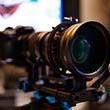
Lenses
TheRenaissanceMan reacted to nahua for a topic
@EOSHD Maybe instead of a thread, a real forum section. I'd like to discuss specifics - Micro 4/3rds lenses, vintage lenses, full frame lenses, etc. I'm just worried that specific topics would be lost in a single discussion thread.1 point -

Grading
Caleb Genheimer reacted to Andrew - EOSHD for a topic
Cinema5D had a famous anamorphic thread which ticked along very nicely for 2 years until it died. I'm a big fan of sticky things :)1 point -
I was going to say, maybe ( I don't know how this forum software works) but maybe you could have sub-forums, rather than single threads, as threads become quite a swamp very quickly. Having sub forums for the topics, and even for individual camera discussion could be a brilliant way to keep things arranged and split administration Quite a lot of other forums i use do this: http://www.thegearpage.net/board Kinda like you do for anamorphic, it could encourage whole sub communities1 point
-
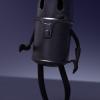
The EOSHD Music Challenge
yannis.zach reacted to galenb for a topic
This is my music that I make all on my own: Let me know if you like it and want to use any of it. :-)1 point -
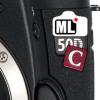
Looking to spend around $2000 on camera and computer
Ivan Lietaert reacted to Julian for a topic
Maybe buy something cheap (Panasonic G6) and keep your D300 if you are happy with it, for stills. Get a focal reducer / lens turbo (cheap speed booster) to use your nikkor lenses. If you have G lenses get a canon eos to m43 focal reducer and a Nikon to eos adapter with aperture control.1 point -

A7s, Depth-of-Field, and the Micro-4/3 Advantage
Andrew - EOSHD reacted to richg101 for a topic
If I can find the time I will shoot some tests with my medium format dof adaptor vs full frame vs aps-c later today. There is a difference. Neither one nor the other is better or worse. They're just different.1 point -

The EOSHD Music Challenge
yannis.zach reacted to oceancamp for a topic
Hi everyone, thought I'd share my own music with the eoshd community. I work with vintage analog gear and modular synthesizers to create soundscapes ranging from experimental ambient to modern electro. As a filmaker myself I tend to compose very visual and cinematic music, and I'd love to have it featured in any of your projects. http://oceancamp.bandcamp.com/album/enter-sunlight Thanks eoshd for the opportunity to share my music and for the constant flow of information about new gear. Now back to where i left...GH4, BMPCC, 5D...so many cameras so little time :)1 point


